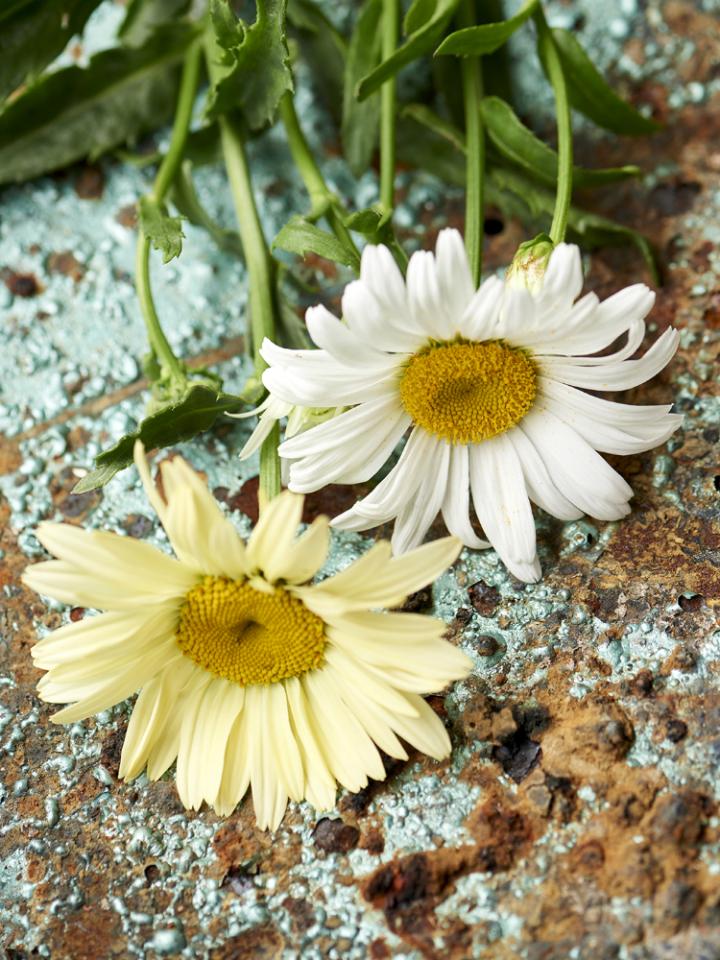The daisy’s official name is Leucanthemum. You’re certainly familiar with the wild version (Leucanthemum vulgare) that cheerfully blooms in lawns in the spring.
Special varieties of this perennial have been created with extra-white, extra-large flowers. You can find them under the name Leucanthemum Maximum Grp. The plant is herbaceous, and the flower stems stand proudly above the elongated leaves. The flower sometimes has a single row of petals, and sometimes multiple rows. The plant’s height ranges from 30 cm to 1 metre. You can easily plant daisies in pots or containers, which means of the plant is also very suitable for a balcony or small patio. It also steals the show in beds. You will enjoy these cheerful characters all summer long.
Origin
The daisy originates from Europe, North Africa and temperate zones of Asia. We even encounter the plant in Australia and New Zealand. The daisy symbolises love and innocence, protection and truth. The daisy also represents the child of the light, the sunshine in your life.
Trivia
- Leucanthemum is derived from the ancient Greek words leukos = white and anthemon = flower, and refers to the daisy’s white flowers.
- In the past the plant was classified in the Chrysanthemum genus. However, close examination showed that Leucanthemum is not aromatic, and there are no grey-white hairs on the leaves.








